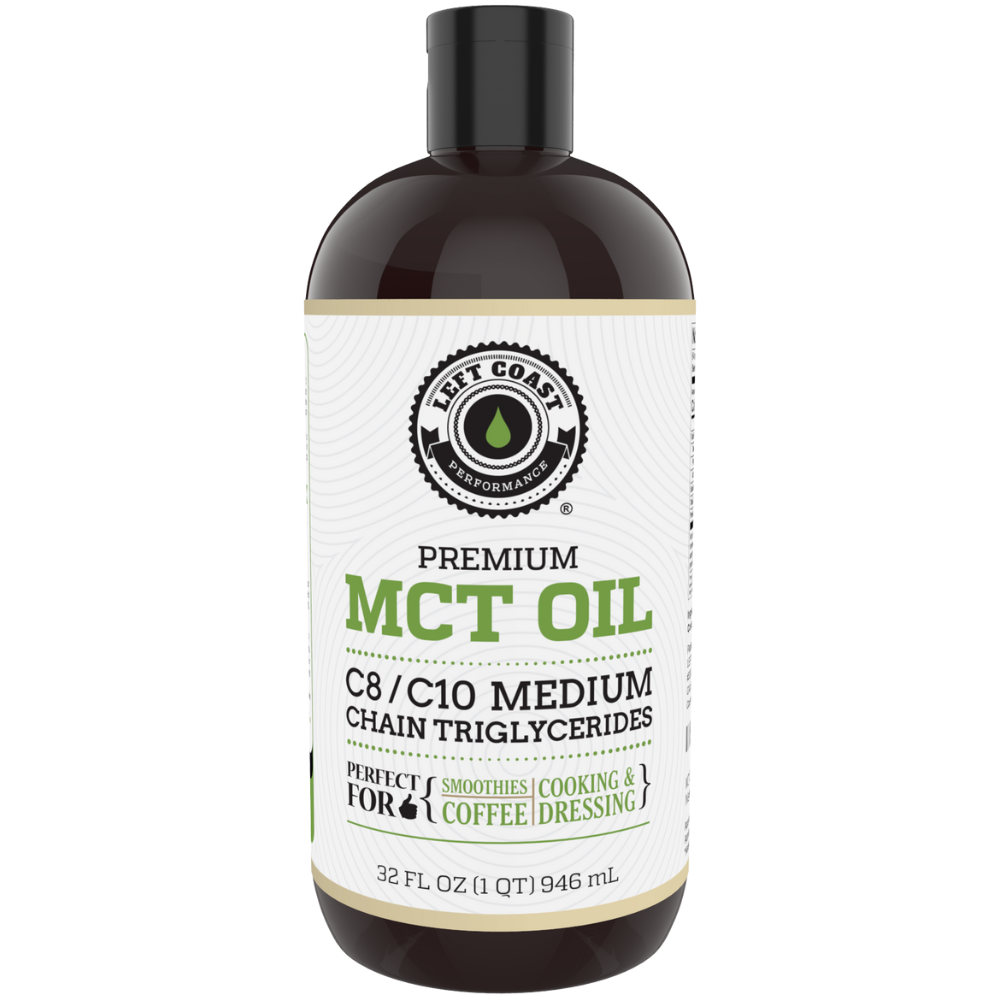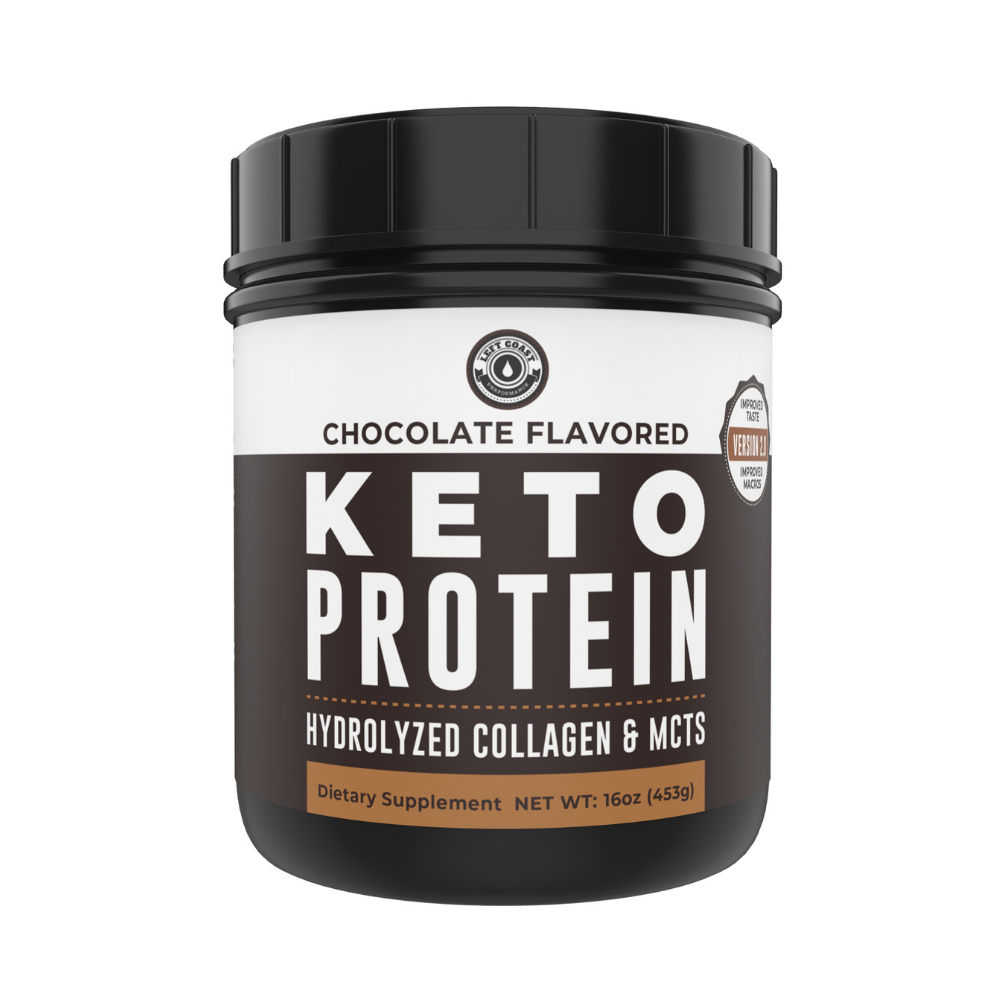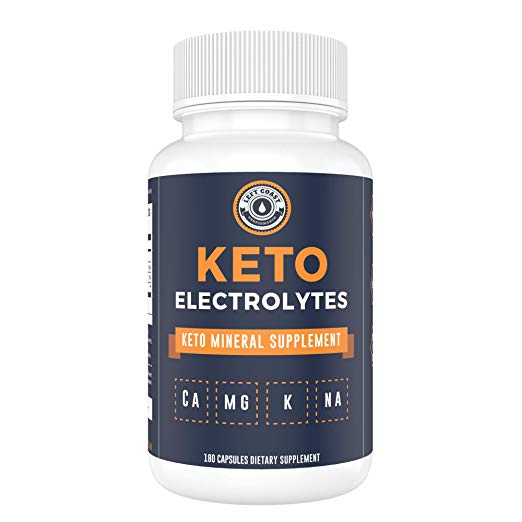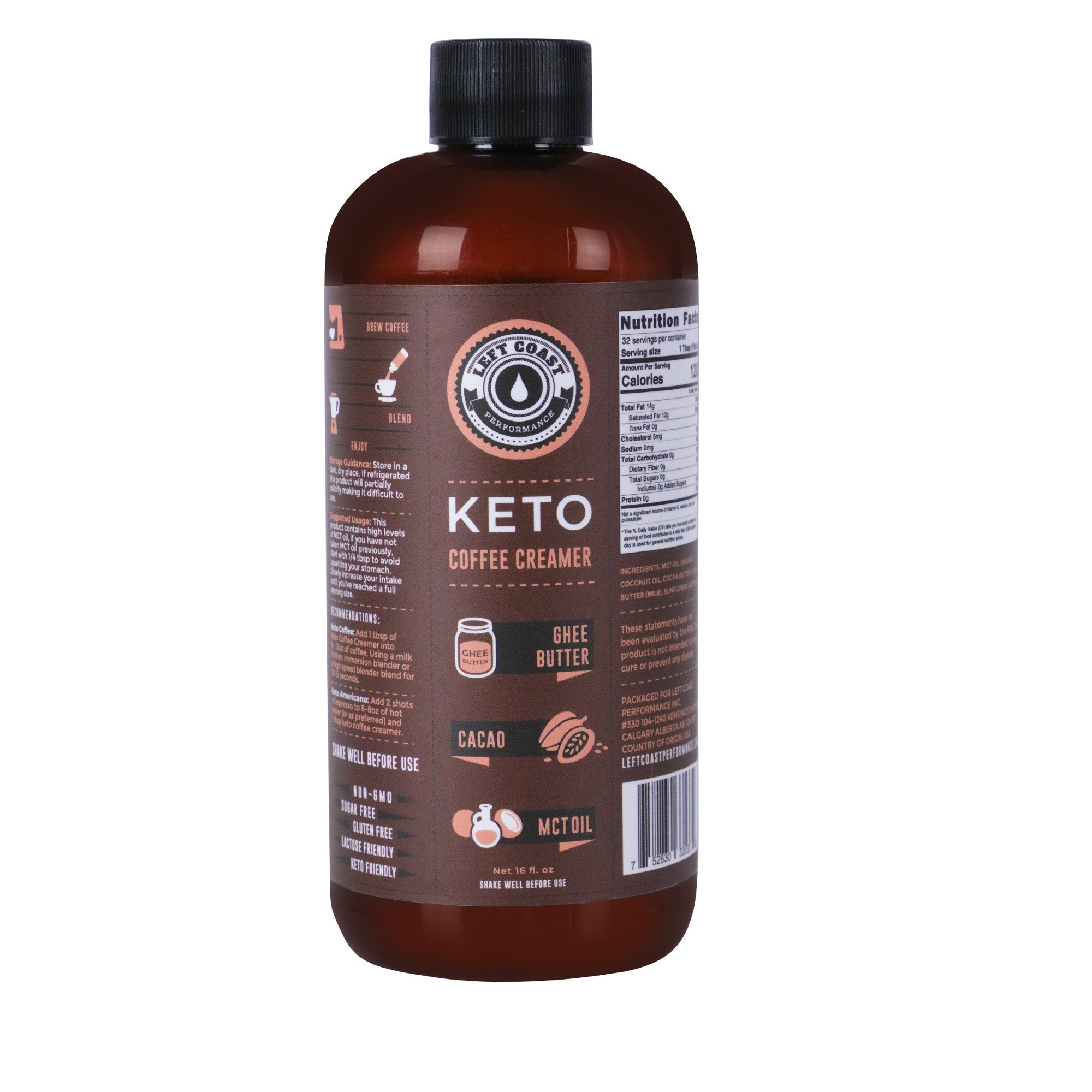Is Hummus Keto Friendly? Plus Low-Carb Dip Alternatives
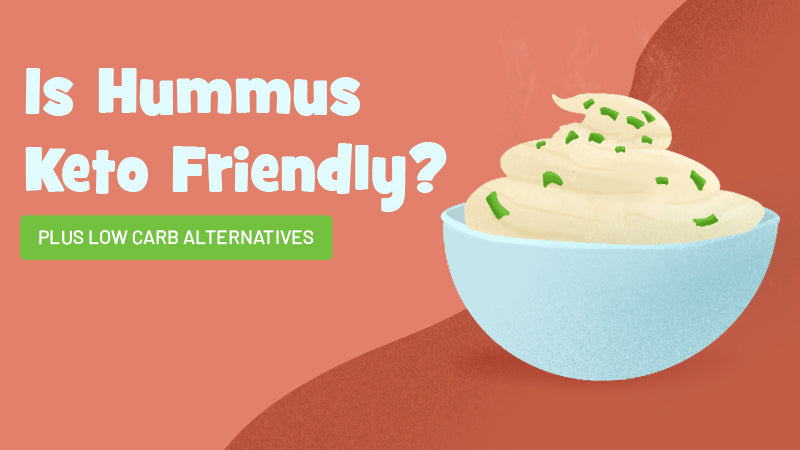
on November 11, 2019
No matter how you blend it — hummus — a popular Middle Eastern dip is not keto-friendly because it’s too high in carbs.
Consuming carbohydrate-rich foods on a ketogenic diet will kick you out of ketosis faster than it will take you to say hummus bi tahini (Arabic for chickpeas with tahini).
For those on keto for weight loss, several tasty hummus alternatives will keep you in ketosis. And, since many of these keto culinary creations use some of the same ingredients as classic hummus, simply swap out the chickpeas in the recipe for a low carb, keto-friendly option.
It’s hummus redefined for keto.
Why Isn’t Hummus Keto Friendly?
Most hummus is not keto primarily because its primary ingredient is a high-carbohydrate legume — chickpeas also known as garbanzo beans.
Chickpeas come in many varieties, shapes, sizes, and colors. Strictly speaking, chickpeas are a particular type of legume called a pulse.
The term “pulse” refers to the dry, edible bean located within the pod. Unlike some legumes, such as peanuts or soy, pulses are low in fat.
These legumes are low in fat and are high in carbs which is a bright red flag that pulses are not keto friendly.
Here’s the macronutrient profile for 1 cup of boiled chickpeas according to the United States Department of Agriculture database (USDA):
| Calories | 269 |
| Fat | 4.2 g |
| Protein | 14.5 g |
| Total Carbohydrates | 45 g |
| Fiber | 12.5 g |
| Net Carbs (Total - Fiber) | 32.5 g |
The recommended macronutrient breakdown for a strict ketogenic diet is:
80% fat :: 15% protein :: 5% carbohydrate
For example, let's consider an adult woman who has a moderate level of physical activity.
After consulting with a nutritionist, they've determined her daily caloric intake at 1800 calories.
Analyzing her diet, they figured out how many grams of each macronutrient she needs based on the following equivalences:
- Fat: 1 gram has 9 calories
- Protein: 1 gram supplies 4 calories
- Carbohydrate: 1 gram is equivalent to 4 calories
So, the calorie and macro breakdown for one day should look like this:
- Fat: 1440 calories from 160 g of fat (the equivalent of 11 tbsp.)
- Protein: 270 calories from 68 g of protein (the equivalent of 2.4 oz.)
- Net Carbs: 90 calories from 23 g of carbohydrate (the equivalent of 0.8 oz)
Note: Conversion values are approximate.
It’s evident from this macronutrient breakdown that even 1 cup of chickpeas in a day is too rich in net carbs to maintain ketosis since 32.5 g > 23 g.
Because chickpeas are the primary ingredient in hummus, it appears unlikely that hummus could ever be keto.
But let’s look at the whole hummus dish to be sure.
Can Hummus Be Keto Friendly?
Strictly speaking, hummus by itself could be considered keto. But — and that’s a huge but — it’s far from the ideal keto food.
Chickpeas are high-carb just like all pulses and legumes.
A classic hummus recipe consists of mashed up chickpeas combined with tahini (sesame seed paste), olive oil, lemon juice, garlic, salt, and spices.
Here are the macro numbers for 1 cup of hummus you can find at your grocery store based on the USDA’s analysis using the SR Legacy.
| Calories | 583 |
| Fat | 43.8 g |
| Protein | 19.1 g |
| Total Carbohydrates | 36.9 g |
| Fiber | 13.5 g |
| Net Carbs (Total Carbohydrates - Fiber) | 23.4 g |
Keto dieters who love to indulge in the creamy pulse dip may see the 23.4 g of net carbs and think, “Great! Hummus is almost keto.” Recall from the section above that the allowable number of grams of net carbs per day on a ketogenic diet is 23 g.
But this is wishful thinking.
Strictly speaking, if in a single day, you ate only one cup of hummus plus lots of fat and a little bit of protein, you’d probably — in theory — stay in ketosis.
However, based on the numbers, you couldn’t stay in ketosis and enjoy the famous Middle Eastern dip as it’s normally served with pita bread.
You couldn’t, for instance, satisfy your hummus craving with low-carb celery, tomatoes, or cucumbers, and certainly not with higher-carb broccoli and carrots, because these vegetables add net carbs to your daily diet.
Snacking like this will put you well over your net carb quota for the day.
Dipping pita bread — truly a keto no-no — into a bowl of creamy hummus is out of the question for the same reason.
This is why traditional hummus, consumed as it typically is, cannot be considered a keto friendly food.
Rather than trying to force keto to conform to old eating habits, there’s a better way.
Another Reason to Avoid Chickpeas: Antinutrients
To stay in ketosis long enough to see substantial weight loss, it’s important to stick to a rigorous macronutrient ratio.
At the same time, it’s critical that you receive all the micronutrients you need every day to keep your metabolic machinery running smoothly.
This is where chickpeas get in the way.
If you're a keto dieter, the nutritional profile above shows why chickpeas are not keto-friendly. They are high in carbs and low in fat – the opposite of what you want.
But if you really love traditional, chickpea-containing hummus and would like to enjoy a little bit now and then, there is another reason why chickpeas aren't the best option.
Like all legumes, chickpeas contain several antinutrients.
“Substantially equivalent” to plant toxins — yes, toxins — antinutrients do exactly what their name implies. They work against your nutritional well-being by preventing some minerals, including iron, calcium, and magnesium, from being absorbed and used by your body.
In other words, antinutrients in chickpeas decrease the bioavailability of minerals you need to be healthy.
So, even if you believe you're getting plenty of micronutrients, and maybe even taking dietary supplements, you may not be receiving enough.
Antinutrients bind fast and firmly to minerals, making them insoluble. This means they no longer stay dissolved in your blood making them unavailable for cellular uptake. The entire chemical complex of antinutrient + mineral is then excreted in your stool.
The major antinutrients in chickpeas are:
- Phytic acid
- Lectins
- Oxalates
- Hemagglutinin
- Tannins
- Saponins
A research study showed that boiling and microwaving chickpeas reduced all antinutrients with the exception of phytic acid. Germination had a greater effect in reducing phytic acid in chickpeas.
To germinate chickpeas, you need to soak them for 36+ hours in warm water or in sunlight. Small roots that look like commas will appear on the chickpeas signifying that germination has occurred.
Then, you’d boil the chickpeas until they were soft before consuming roots + chickpeas.
Another study concluded that soaking the pulses in distilled water “significantly decreased” the lectins and oxalates but “had no impact on” phytic acid.
Take-Home Message: Because antinutrients in chickpeas irrevocably bind up important minerals necessary for health, eat chickpeas at your own discretion.
Tip: Take a multivitamin/mineral supplement 4+ hours before consuming them to increase absorption by your body before consuming antinutrients in chickpeas.
The Best Keto Friendly Hummus Dip Substitutes
It’s easy to whip up a velvety smooth spread with minimal prep time using keto fruits, vegetables, or flowers that are low carb. Our top choices for keto hummus include:
- Avocado
- Cauliflower
- Artichoke
Avocado
Botanically classified as a berry, avocados are ideal keto foods. Here’s the macro profile for 1 cup of pureed avocado:
| Calories | 384 |
| Fat | 35.4 g |
| Protein | 4.5 g |
| Total Carbohydrates | 19.9 g |
| Fiber | 15.6 g |
| Net Carbs (Total Carbohydrate - Fiber) | 4.3 g |
Using a traditional hummus recipe with only one change — switching out the chickpeas for avocado — you’ll create a wonderful ketogenic spread. Serve with celery, tomatoes, and cucumber to dip, you’ll have a perfect keto lunch or keto snack.
Cauliflower
A versatile vegetable that works wonders with its florets in stir-frys, as a fried appetizer, as a roasted “steak,” or as the main ingredient in pizza crust.
There’s literally no end to what you can do with this low-carb keto favorite.
A glance at the macronutrient profile of 1 cup boiled and drained cauliflower explains just how keto-friendly cauliflower is:
| Calories | 29 |
| Fat | 0.6 g |
| Protein | 2.3 g |
| Total Carbohydrates | 5.1 g |
| Fiber | 2.9 g |
| Net Carbs (Total Carbohydrate - Fiber) | 2.2 g |
Although there are negligible fat and protein in cauliflower, it’s a veritable low-carb vegetable.
Blending cauliflower until you achieve a smooth consistency will make it a perfect choice as the basis of a keto dip.
Artichoke
If you’ve never tried artichokes before, you’re in for a real treat.
Don’t be intimidated by the looks of an artichoke, which is actually a flower bud. Its center (called the heart) is a relatively low-carb option for a keto dip.
Here are the macronutrient stats for 1 cup boiled and drained artichoke hearts:
| Calories | 89 |
| Fat | 0.6 g |
| Protein | 4.9 g |
| Total Carbohydrates | 20 g |
| Fiber | 9.6 g |
| Net Carbs (Total Carbohydrate - Fiber) | 10.4 g |
Although net carbs for artichoke is higher than for avocado or cauliflower, an occasional keto spread featuring the artichoke will add interesting texture, taste, and variety to your keto meal plan.
Health Benefits of Low-Carb Alternatives to Hummus
There are many health benefits you’ll gain from avocados, cauliflower, and artichokes. Here are more reasons for making them a standard part of your keto menu plan.
Avocado
High in monounsaturated fats and extremely low in net carbs, avocados are the premier fruit for keto dieters.
A survey of over 17,000 adults showed that those who consumed avocados had a statistically significant lower body weight, body mass index (BMI), and waist circumference.
High-density lipoprotein (HDL) was higher (confirmed in a review of 18 separate studies). They also had a 50% less chance of developing metabolic syndrome compared to people who did not consume avocados. Another survey of 55,000 adults showed that habitual avocado eaters had less chance of gaining weight.
Cauliflower
Cauliflower is a low-carb, cruciferous vegetable that has gained popularity recently as an alternative to starchy potatoes and rice.
As a member of the Brassica family along with broccoli and brussels sprouts, cauliflower contains sulforaphane, believed to have cancer-fighting properties. Cauliflower is a mainstay of a ketogenic diet.
A 24-year examination of the diets of over 130,000 adults revealed that regular consumption of cauliflower was associated with weight loss.
This observation lends support to the Cauliflower Diet and cookbooks entirely devoted to cauliflower.
Artichoke
All parts of artichokes have been used for their medicinal qualities for centuries.
Not only are artichokes known to support liver and gallbladder, both important organs for fat metabolism, but now researchers are investigating artichokes as promoters of cardiovascular health.
Recent research shows that an artichoke leaf extract helps reduce the symptoms of non-alcoholic fatty liver disease, a chronic liver condition common in obese individuals and is often the result of metabolic syndrome.
Recipes for Keto Alternatives to Chickpea Hummus
Once you’ve decided on the low-carb star of your keto dip, it’s time to get creative in your kitchen! Here are a few recipe ideas for keto alternatives to hummus:
Avocado Hummus
The secret to making an avocado keto dip that’s different from guacamole is in the mayo. The Spruce Eats has a recipe that results in a delicious spread that’s sure to please.
Roasted Cauliflower and Sesame Hummus
For a cauliflower dip that you may mistake for classic hummus, try Food and Wine’s dairy-free and gluten-free cauliflower hummus recipe.
It calls for vegetable oil — but to win extra keto points opt for olive or avocado oil. Other vegetable oils, such as corn or soy oil, are high in omega-6 which you want to avoid.
The amount of tahini called for in this recipe to make 2 cups of dip adds 5.3 g of net carbs to it.
One ounce of sesame seeds as a garnish contributes 3.3 g of net carbs. If you’re counting your net carbs closely, you may wish to leave off one or both of the tahini or sesame seeds. Or, reduce their amounts by half when you’re preparing it. Another idea is to eat only a small amount of the recipe as is in one day.
Artichoke Hummus
Made with artichoke hearts, mayo, and parmesan cheese, this keto spread is delish! Adding low-carb spinach risks making this one of your all-time favorite keto friendly hummus recipe.
Tips For Making A Keto Friendly Hummus
The best way to keep your macro ratios optimal to stay in the fat-burning mode of ketosis is to prepare these spreads from scratch. Don't be afraid to make recipes from scratch. The recipes we recommend have minimal prep times and are worth the effort.
This way, you won’t have to worry about hidden ingredients in pre-made brands. Often, these ingredients add unwanted carbs that are better left out of your keto diet.
Another undesirable component of dips and spreads from the supermarket is vegetable oil. On keto, the omega-6 rich, polyunsaturated vegetable oils are best avoided. Instead, opt for monounsaturated olive or avocado oils.
When you’re making a keto spread, mayonnaise and cream cheese are welcome additions as well. Even if the recipe doesn’t call for it, improvisation with more fat will enhance your keto dip or spread. It will certainly make it silkier! (Remember to count the additional fat in your macros for the day.)
Drizzle a tablespoon of MCT Oil over your culinary masterpiece. MCT oil is a fat source that your body rapidly burns for fuel when you're in ketosis and can help you feel full for longer. It's an easy way to make a keto-optimized spread.
The Bottom Line on Keto Alternatives to Hummus
Traditional hummus isn’t keto because its primary ingredient, chickpeas, is high in carbohydrates.
But, there are several low-carb alternatives that can substitute for chickpeas in keto dips and spreads.
Avocado, cauliflower, and artichoke are top choices. Try dipping low-carb vegetables, such as celery, tomatoes, and cucumbers into your keto dips for a perfect keto snack or appetizer.
If you're new to the keto diet and are looking for recipe ideas or grocery shopping lists, be sure to check out our blog with articles written by expert nutritionists and dieticians for evidence-based tips and tricks.





